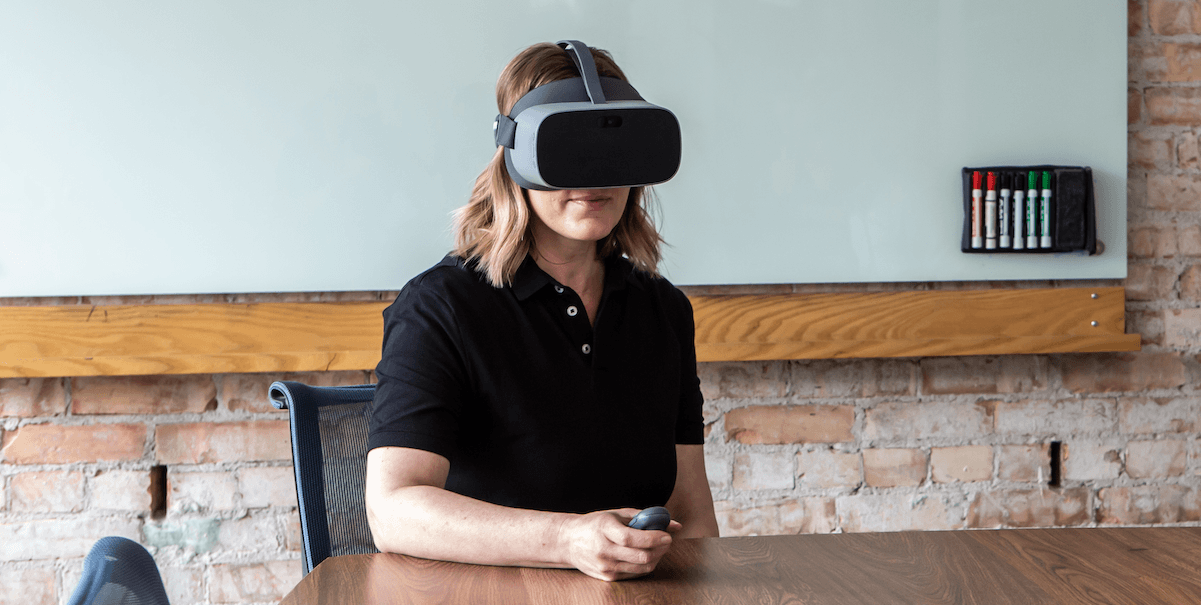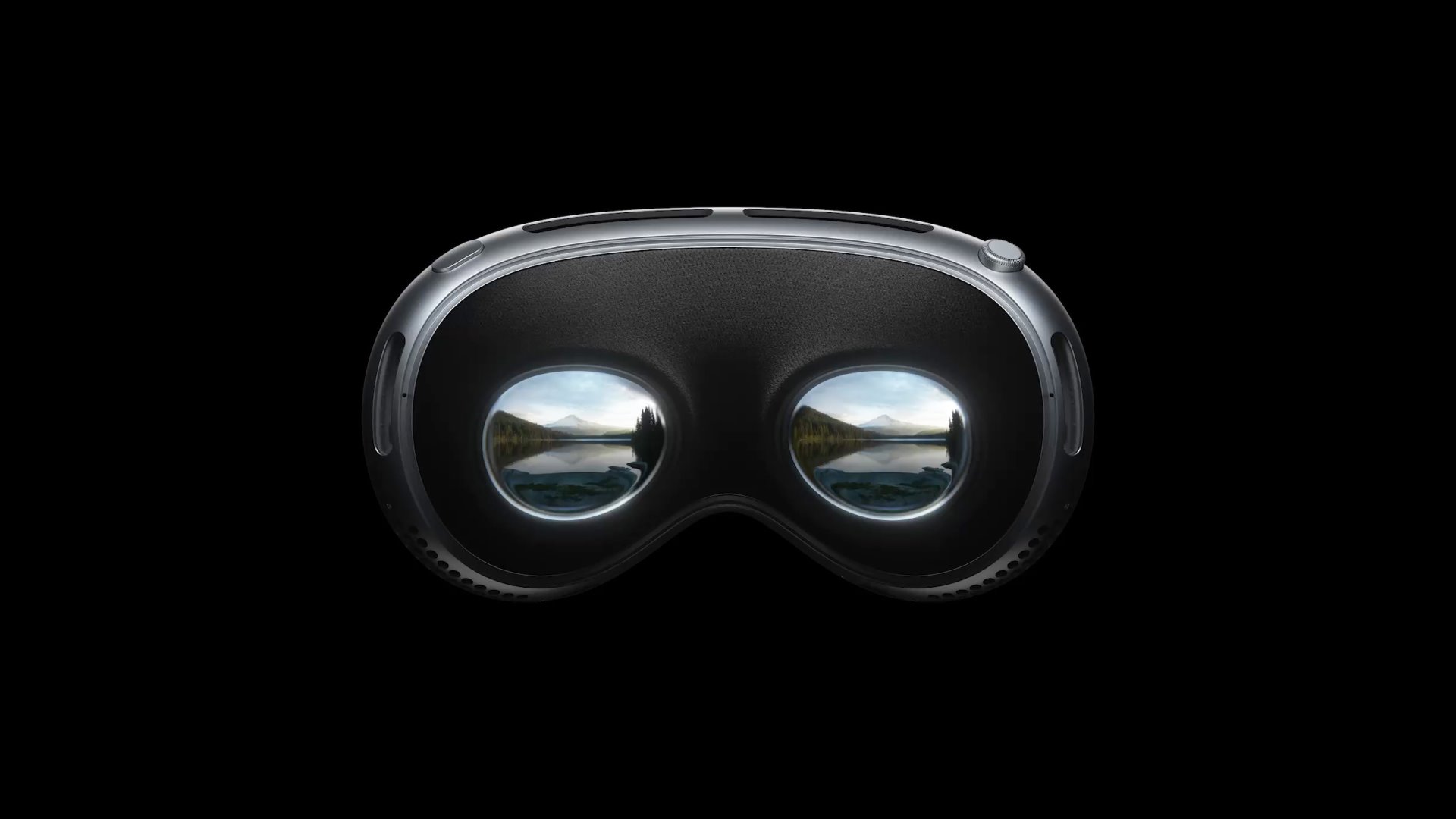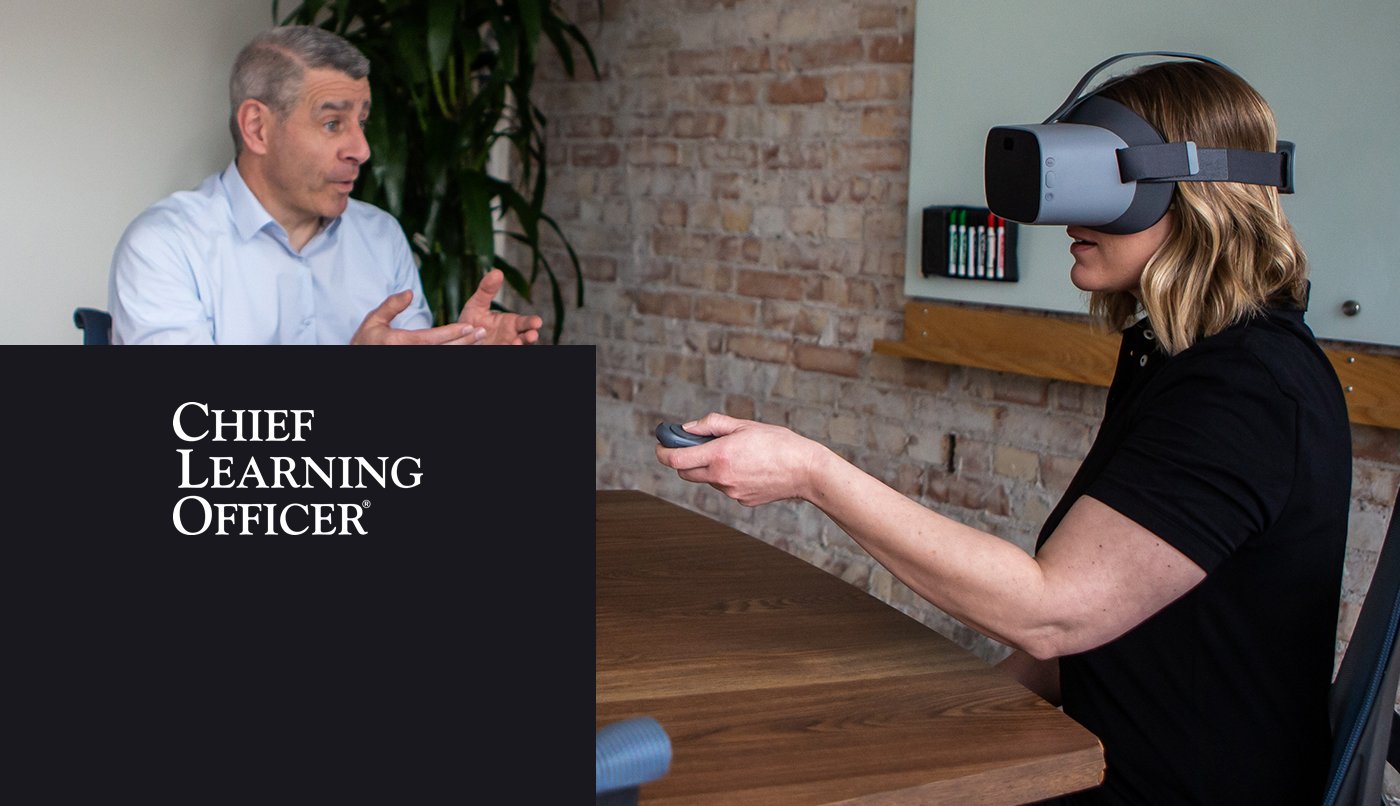Spend five minutes in the business world, and you’ll hear the word scalability. If you can’t scale your manufacturing, your operations, your marketing, and your sales, your organization is not going to thrive in the long run.
While this might not be true for every company in every case, it’s a general truth in business. And it’s true for employee training as well. Without scalable learning methods, you often have to choose between effective and affordable.
Within the world of employee training, there has long been a tradeoff: For many organizations, the most effective training is hands-on and personal. But you can’t exactly scale your best trainer in person across multiple locations in a cost-effective and practical way. Using computer software to train is highly scalable — but not always entirely effective.
Immersive Learning with VR is the bridge to this gap.
Immersive Learning: Not just effective but scalable learning
Placing people in a realistic environment to have them practice the skills they’ll need on the job is integral to effective training. This is where the idea of role-playing originally came from. In fact, the Brandon Hall Group recently found that 85% of organizations believe simulations and realistic scenarios are critical to practicing all kinds of skills, including technical skills, soft skills, and leadership skills.
Of all the ways to induce simulation, VR provides the richest experience because it’s so immersive. The learner is placed in a highly realistic environment and interacts with simulated equipment and avatars in ways that build real memory, including muscle memory. Immersive Learning is also scalable learning because once a learning module has been created, it can be replicated for many people across multiple locations, enabling repeat interactions over time. All it takes to scale VR training is another headset.

How one organization created scalable learning with VR
Non-profit healthcare system AdventHealth partnered with Strivr’s scalable solution to create an Immersive Learning pilot across 4 of its 52 hospitals. The hospital’s Patient Safety Academy first pinpointed a training scalability issue that could potentially be addressed by VR learning: procedural sedation.
There was already an official company-wide standard of practice for procedural sedation techniques at AdventHealth. But, because the training itself was not consistent, the technique was handled slightly differently from hospital to hospital. VR training appealed to the Director of Simulation & Innovative Technologies, Todd Larson, because he knew it could be used to standardize training at every location — but also to optimize training scalability.
Larson explains, “We look for ways to engage our learners any way we can, and VR is a way to reproduce training that’s consistent and push it across our hospital system in an efficient way. We don’t want to be practicing on real patients unless we have to, so to be able to engage people in virtual reality was very appealing.”
The AdventHealth pilot rolled out to 367 RNs in just a month. At the end of the pilot, 84% of learners reported that they felt more prepared than before, and 85% said they enjoyed it more than non-VR training. AdventHealth measured the outcomes of the pilot in additional, detailed ways to truly understand the effectiveness of scaling training with VR:
- How confident the learners were about assessing patient condition after the training
- How many felt more confident about administering medication
- How confident they felt about monitoring patient response
Larson reports, “It really met our goals in terms of leveling practice — training in the same way across our system in three clinical areas. We’re going to use this as an annual competency measure to look at how well our nurses are performing year to year.”
Read AdventHealth’s customer story
Moments of microlearning add to scalability
“The more you modularize your learning content, the easier it is to update, fine-tune and bundle with other modules that make for a complete training experience.”
AdventHealth chose one small area of learning to experiment with scaling training via VR, but this wasn’t simply for the sake of taking a cautious toe-dip into a new technology. Research shows that cutting learning experiences into smaller bites creates a more successful outcome. We call these “micro-learning moments,” and they make learning strategy not only more effective but more accessible and scalable.
Within Immersive Learning, you can create multiple learning modules to teach employees specific hard and soft skills. Kept short, those modules can be experienced in isolated ways, stacked together, and repeated on demand. These are all elements of scalability that Immersive Learning excels at.
A scalable learning platform with definitive ROI
“We are obsessed with scale. We are the only company in the world that has scaled VR across hundreds of locations, thousands of devices, and hundreds of thousands of employees.”
— Derek Belch, Co-Founder and CEO, Strivr
A retail organization like Walmart, which has hundreds of stores and many dispersed training facilities, needs to know how usage metrics break down for each store and across the entire company. This is true also for manufacturing organizations, hospitality businesses, construction companies, and all kinds of businesses that have a lot of employees in a lot of places.
➤ Read Strivr customer stories across industries
Read Strivr customer stories across industries
You’re only scaling your training program well if you can measure its outcomes effectively. Immersive Learning provides various types of analytics and insights, including detailed usage data on who is using the training, how often, and for how long.
Some of the data that Immersive Learning provides is subjective. Sentiment analysis, for instance, measures how learners felt about the scalable VR training. Other types of data are quantitative: numbers that speak truth. For instance, with Strivr’s Immersive Learning platform, customers have access to straightforward usage data, performance data, and attention and engagement data. All of these different types of data add up to make the business case for investing in further VR training programs.
Strivr’s VR learning platform is an effective, scalable solution to standardizing your best training programs across multiple locations. Learn more about scalable learning made simple.





